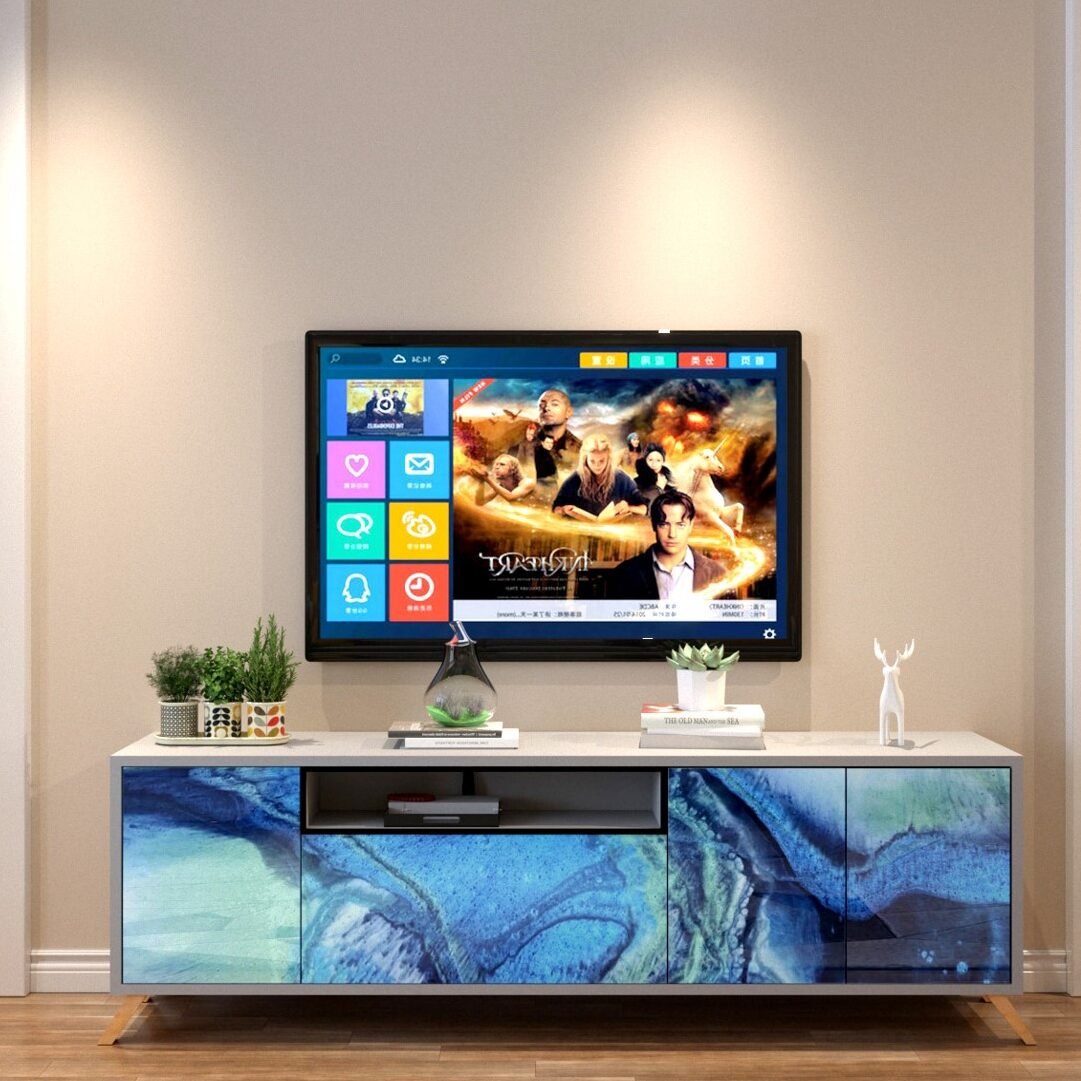From Wood to Wow: The Art of Crafting Epoxy Furniture-Fankaarlok

In recent years, epoxy furniture has emerged as a hallmark of modern interior design, seamlessly blending natural beauty with contemporary style. Its unique appeal lies in the stunning aesthetics it can achieve, marrying the rustic allure of wood with the sleek, glossy finish of epoxy resin. From breathtaking epoxy tables to intricate resin accents, the possibilities are seemingly endless when crafting with this versatile material. In this article, we will delve into the art of creating epoxy furniture, exploring innovative epoxy table ideas, modern epoxy furniture trends, and the sophisticated techniques that transform ordinary wood into extraordinary works of art.
Understanding Epoxy Furniture
Epoxy furniture refers to pieces where epoxy resin is skillfully combined with wood or other materials to create stunning visual effects. The resin can be used to fill gaps, create glossy surfaces, or even embed objects, offering a unique aesthetic not achievable with wood alone. This fusion of elements results in furniture that captivates with its beauty and intrigues with its complexity, making it a favorite among designers and homeowners alike.
The Appeal of Epoxy
Epoxy resin is cherished for its exceptional versatility and durability. Once cured, it provides a hard, glass-like finish that not only enhances the wood’s natural grain but also offers protection from moisture and scratches. This makes it an ideal choice for furniture pieces that are both beautiful and functional, capable of withstanding the rigors of everyday use while maintaining their visual appeal. Furthermore, the resin’s ability to be tinted in various colors or remain crystal clear adds a level of customization that allows each piece to be as unique as its creator desires.
Applications in Modern Furniture
Epoxy is employed in a wide range of furniture types, from dining tables and coffee tables to bar tops, desks, and even smaller decorative pieces like coasters and shelves. Its ability to bond with multiple materials, including wood, metal, and glass, makes it a favorite among artisans and DIY enthusiasts seeking to push the boundaries of traditional furniture design. This versatility extends to a variety of styles, whether aiming for a rustic look with natural wood grains or a modern aesthetic with bold, vibrant colors.
Epoxy Table Ideas
Creating an epoxy table involves more than just pouring resin onto wood; it requires a harmonious blend of creativity, precision, and an in-depth understanding of materials. Each table is a canvas, and the resin is the medium through which artisans express their vision.
Epoxy River Tables
One of the most popular epoxy table ideas is the river table. By combining two slabs of wood with a river of resin running between them, these tables mimic the look of a flowing river. The resin can be clear or tinted in various colors, adding a personalized touch to the piece. The result is a stunning visual effect that captivates the eye and evokes a sense of tranquility and movement, transforming any space into a serene retreat. These tables not only serve as functional pieces but also as dynamic works of art that invite conversation and admiration.
Live Edge Tables with Epoxy
Live edge tables retain the natural shape of the wood, and when combined with epoxy, they create a striking contrast between the organic and the synthetic. The resin can fill natural voids and cracks, preserving the wood’s character while adding strength. This technique celebrates the imperfections of the wood, turning what might be considered flaws into features that highlight the material’s natural beauty. The combination of live edges and epoxy creates a piece that is both rugged and refined, perfectly suited for a variety of interior styles.
Embedded Objects
Another creative epoxy table idea is embedding objects within the resin. This could include anything from stones and shells to LEDs, creating a table that not only serves as a functional piece of furniture but also as a conversation starter. These embedded elements add depth and interest, allowing for personalization that reflects the owner’s tastes and interests. Whether it’s a collection of mementos or a thematic display, embedding objects in epoxy can transform a simple table into a storytelling piece that sparks curiosity and engagement.
Crafting Modern Epoxy Furniture
The process of crafting modern epoxy furniture involves several steps, each requiring meticulous attention to detail. From selecting the right materials to applying the finishing touches, every phase is crucial to achieving a flawless result.
Selecting the Right Wood
Choosing the right type of wood is crucial to the success of an epoxy furniture project. Hardwoods like walnut, oak, and maple are popular choices due to their durability and attractive grain patterns. The wood must be properly dried to prevent moisture from affecting the resin, as any residual moisture can lead to clouding or weak spots in the final product. The selection process involves considering the wood’s natural characteristics and how they will interact with the epoxy, ensuring that the final piece will be both visually appealing and structurally sound.
Preparing the Wood
Before applying the epoxy, the wood must be meticulously sanded and cleaned to ensure a smooth surface. Any dust or debris can interfere with the resin’s adhesion, leading to imperfections that detract from the finished piece. Sealing the wood with a thin layer of epoxy can help prevent air bubbles from forming during the main pour, resulting in a clearer and more polished appearance. This preparatory step is essential for achieving a seamless bond between the wood and the resin, laying the foundation for a successful project.
Mixing and Pouring Epoxy
Mixing epoxy resin involves combining the resin with a hardener, following the manufacturer’s instructions for the correct ratio. Once mixed, the resin should be poured carefully, using tools to spread it evenly and remove air bubbles. Patience is key, as the resin must cure completely before the furniture can be used. This step requires a steady hand and a keen eye, as the way the resin is poured and manipulated will determine the final appearance of the piece. Ensuring an even distribution and a bubble-free finish is crucial to achieving the desired aesthetic effect.
Finishing Touches
After the epoxy has cured, the furniture piece requires finishing to bring out its full potential. This involves additional sanding and polishing to achieve a smooth, shiny surface that enhances the beauty of the wood and resin. Applying a protective coat can enhance the gloss and prolong the furniture’s life, ensuring that it remains a stunning centerpiece in any room for years to come. The finishing touches are where the piece truly comes to life, transforming it from a raw creation into a refined work of art that captivates and inspires.
Trends in Epoxy Furniture
As epoxy furniture continues to evolve, several trends have emerged, showcasing the creativity and innovation within this craft. These trends reflect the diverse ways artisans are pushing the boundaries of traditional furniture design, using epoxy to create pieces that are as functional as they are beautiful.
Color Variations
While clear epoxy remains a popular choice for its timeless appeal, many artisans are experimenting with colors, adding pigments or dyes to create vibrant, custom pieces. This trend allows for more personalized designs that can match any interior decor, from bold, statement pieces to subtle, harmonious accents. The use of color opens up a world of possibilities, enabling designers to create furniture that not only complements a space but also defines it, adding a touch of personality and flair.
Sustainable Practices
With growing environmental awareness, many creators are focusing on sustainable practices in the production of epoxy furniture. This includes using reclaimed wood or eco-friendly resins, ensuring that the beauty of epoxy furniture does not come at the planet’s expense. By prioritizing sustainability, artisans can create stunning pieces that are not only aesthetically pleasing but also environmentally responsible, appealing to conscious consumers who value both style and substance.
Minimalist Designs
The minimalist trend in furniture design has also influenced epoxy furniture, with clean lines and simple forms taking precedence. These pieces often feature subtle resin accents, emphasizing the natural beauty of the wood and creating a serene, uncluttered aesthetic. The minimalist approach allows the inherent qualities of the materials to shine, resulting in furniture that is both elegant and understated, perfectly suited to modern living spaces.
The Future of Epoxy Furniture
The future of epoxy furniture looks promising, with new techniques and materials expanding the possibilities and pushing the boundaries of what can be achieved. As technology advances, we can expect to see even more innovative designs and applications, transforming the way we think about and interact with furniture. Visit our website for more futuristic furniture.
Technological Innovations
Advancements in resin technology may lead to faster curing times, increased durability, and new aesthetic possibilities. For example, UV-resistant resins can prevent yellowing, ensuring that furniture retains its clarity over time, while new formulations could offer enhanced scratch resistance and flexibility. These innovations will likely inspire new design approaches and enable more intricate and ambitious projects, further cementing epoxy furniture’s place in the world of modern design.
Expanding Beyond Tables
While epoxy tables are the most common application, the potential of epoxy furniture extends far beyond this singular form. Designers are exploring its use in chairs, cabinets, and even outdoor furniture, pushing the boundaries of what epoxy can achieve. This expansion into new furniture types opens up a world of possibilities, allowing for the creation of cohesive collections that bring the beauty and functionality of epoxy to every corner of the home.
Conclusion
Crafting epoxy furniture is an art that combines creativity with craftsmanship, offering endless possibilities for those willing to explore its potential. Whether you’re a seasoned artisan or a DIY enthusiast, the world of epoxy offers numerous opportunities to transform wood into stunning, modern pieces. As you explore epoxy table ideas and modern epoxy furniture trends, remember that each piece is not just furniture but a unique expression of art.
Incorporating epoxy into your designs can elevate your furniture from ordinary to extraordinary, truly taking it from wood to wow. With the continued evolution of materials and techniques, the future of epoxy furniture promises to be as exciting as it is inspiring, inviting new generations of creators to explore the art of crafting with resin.
For more information, connect with us on instagram @fankaarlok.
Check out our other products here: https://fankaarlok.in/categories/




